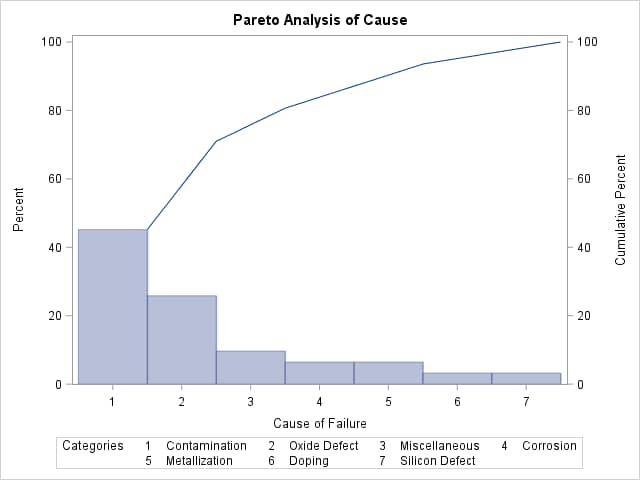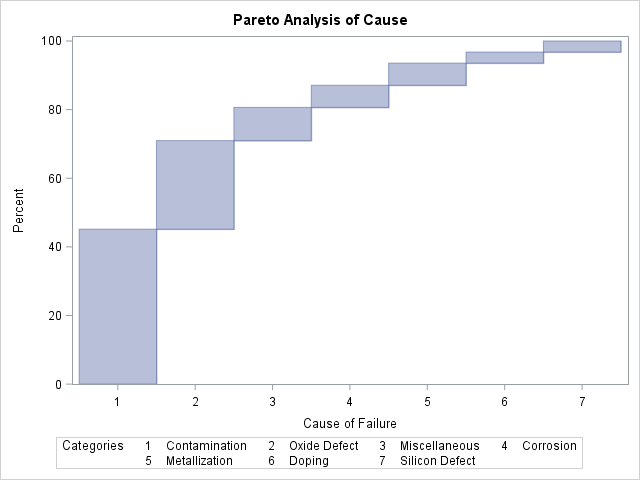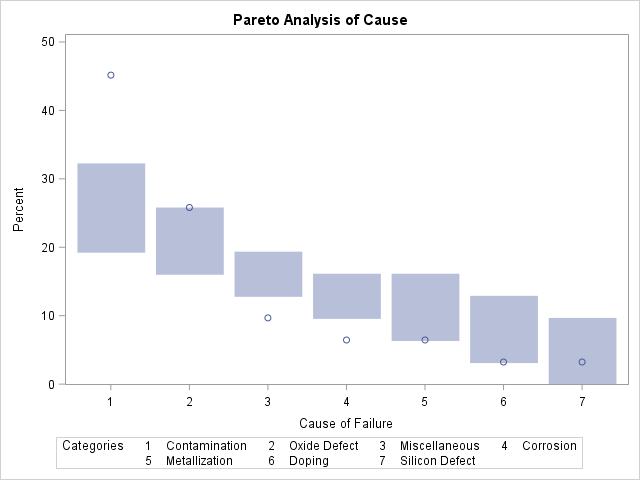The PARETO Procedure
- Overview
-
Getting Started

-
Syntax

-
Details

-
Examples
 Creating Before-and-After Pareto ChartsCreating Two-Way Comparative Pareto ChartsHighlighting the "Vital Few"Highlighting Combinations of CategoriesHighlighting Combinations of CellsOrdering Rows and Columns in a Comparative Pareto ChartMerging Columns in a Comparative Pareto ChartCreating Weighted Pareto ChartsCreating Alternative Pareto ChartsCustomizing Inset Labels and Formatting ValuesSpecifying Inset Headers and PositionsManaging a Large Number of Categories
Creating Before-and-After Pareto ChartsCreating Two-Way Comparative Pareto ChartsHighlighting the "Vital Few"Highlighting Combinations of CategoriesHighlighting Combinations of CellsOrdering Rows and Columns in a Comparative Pareto ChartMerging Columns in a Comparative Pareto ChartCreating Weighted Pareto ChartsCreating Alternative Pareto ChartsCustomizing Inset Labels and Formatting ValuesSpecifying Inset Headers and PositionsManaging a Large Number of Categories - References
Example 15.9 Creating Alternative Pareto Charts
Note: See Alternative Pareto Charts in the SAS/QC Sample Library.
This example uses the Failure1 data set of integrated circuit fabrication failures from the section Creating a Pareto Chart from Raw Data. The following statements use the CHARTTYPE=
option to produce a standard Pareto chart, a cumulative Pareto bar chart, and a Pareto dot plot that includes acceptance
intervals for the data:
proc pareto data=Failure1; vbar Cause; vbar Cause / charttype=cumulative; vbar Cause / charttype=intervals; run;
Note: ODS Graphics must be enabled for you to use the CHARTTYPE= option.
Output 15.9.1 shows the standard Pareto chart that the first VBAR statement produces.
Output 15.9.1: Standard Pareto Chart

Output 15.9.2 shows the cumulative Pareto bar chart that the second VBAR statement produces.
Output 15.9.2: Cumulative Pareto Bar Chart

Output 15.9.3 shows the Pareto dot plot and acceptance intervals that the third VBAR statement produces.
Output 15.9.3: Pareto Dot Plot and Acceptance Intervals

Output 15.9.3 shows that the most frequently occurring problem, Contamination, occurs more frequently than the first-ranked cause from a random sample of seven uniformly distributed causes. This result indicates that addressing contamination problems should be given a high priority.